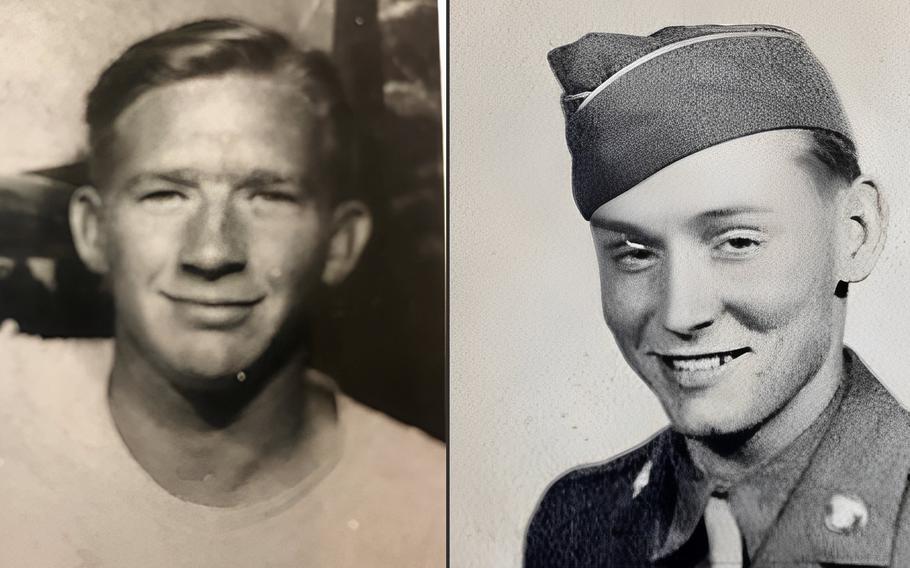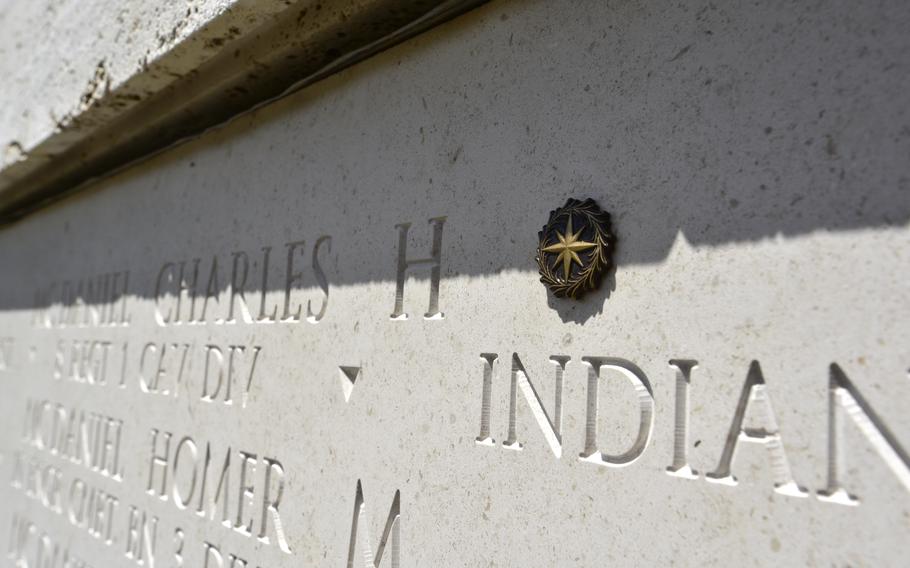
Army Cpl. Dewey E. Rewis Jr. went missing after an enemy attack in North Korea in December 1950, and his remains were not returned to the United States for decades. He was a member of Battery D, 15th Anti-Aircraft Artillery Automatic Weapons Battalion, 31st Regimental Combat Team, 7th Infantry Division. (Defense POW/MIA Accounting Agency)
WASHINGTON — The remains of a soldier who went missing in action in North Korea more than 70 years ago will be buried this week at a cemetery near the man’s hometown in Georgia.
Army Cpl. Dewey Edwards Rewis Jr. was a member of the 31st Regimental Combat Team of the 7th Infantry Division during the Korean War when his unit came under fire on Dec. 2, 1950, during the Battle of Chosin Reservoir in North Korea.
The battle, which lasted for close to three weeks in freezing cold weather, began not long after China entered the war in support of North Korea against United Nations forces from South Korea, Britain and the United States. Roughly 120,000 Chinese troops had 30,000 U.N. forces surrounded in the reservoir area. Eventually, the U.N. forces were able to break out and escape. About 7,500 U.S. soldiers and Marines were wounded or killed during the fighting.
After the battle, there was no word on Rewis’ whereabouts for three years until a group of released American prisoners of war told military officials in 1953 that the 18-year-old soldier had been taken prisoner and died after a few months in captivity.
“Four POWs returned during Operation Big Switch reported Rewis had been a prisoner of war and died in March 1951 at an area called Death Valley,” the Defense POW/MIA Accounting Agency said. “It was not an established POW camp but a collection point for United Nations prisoners.”
Operation Big Switch was a joint effort to release all prisoners of war from the conflict after U.S. involvement ended in 1953.
Rewis remained unaccounted for officially, though the U.S. military knew he died in captivity. In 1954, North Korea turned over American remains that came from the Death Valley area, which is north of the Chosin Reservoir, to the United Nations Command, but none were Rewis.
“Rewis’ name did not appear on any of the transfer rosters, and the Central Identification Unit in Kokura, Japan, did not associate any repatriated remains with him,” said the DPAA, the military agency that accounts for missing troops from past conflicts. “Rewis was determined to be non-recoverable on Jan. 16, 1956.”
The Georgia man’s remains stayed in North Korea for decades, until almost 43 years to the day after Rewis went missing, before Pyongyang turned over dozens of boxes of additional American remains to the United Nations Command in 1993. It took years of forensic analysis before the Central Identification Lab in Hawaii found one set of remains belonged to a soldier from the 31st Regimental Combat Team who had died near the Chosin Reservoir. In October, various testing methods — including dental, anthropological and mitochondrial DNA analysis — concluded those remains were Rewis.
Rewis’ family told WALB-TV in Albany, Ga., that military scientists used paternal DNA from three relatives to help identify the remains.
“[The family] did have some information back in the ‘50s about some POWs who were in the camp with Dewey Edwards, and that he had died in that prison camp. But they never had any closure until this recent finding,” Austin Deloach, a cousin of Rewis, told the TV station.
Rewis’ remains will be interred Saturday at Wayfare Primitive Baptist Church Cemetery in Echols County, Ga., Army officials said Tuesday. Rewis was from Waycross, Ga., which is about 40 miles north of the Georgia-Florida border.

The name of Army Master Sgt. Charles H. McDaniel Sr. carved into a wall of the Courts of the Missing at the National Memorial Cemetery of the Pacific in Hawaii is shown in 2018 with a rosette placed next to it, symbolizing he has been accounted for. (U.S. Army)
For decades, Rewis’ name has been listed on the American Battle Monuments Commission’s Courts of the Missing at the National Memorial Cemetery of the Pacific in Hawaii, along with 28,000 other U.S. troops who went missing during the Vietnam War, Korean War and World War II. Now that his remains have been identified, a rosette will be placed next to Rewis’ name on the monument to signify he now rests in a known gravesite.
The Army posthumously awarded Rewis several medals, including the Purple Heart, the Prisoner of War Medal, Korean Service Medal, United Nations Service Medal, National Defense Service Medal, Korean Presidential Unit Citation and Republic of Korea War Service Medal.
Almost 7,500 American troops from the Korean War are still missing. Hundreds are considered “non-recoverable,” according to the DPAA. Rewis was in that category for decades until North Korea returned his remains.
U.S. remains from the Korean War, which lasted from 1950 to 1953, are still repatriated on occasion. In February, the remains of an unidentified American soldier discovered in Gangwon Province in 2021 were transferred from South Korea to the United States. A joint forensic analysis involving the DPAA found in the fall that they likely belonged to an American service member.